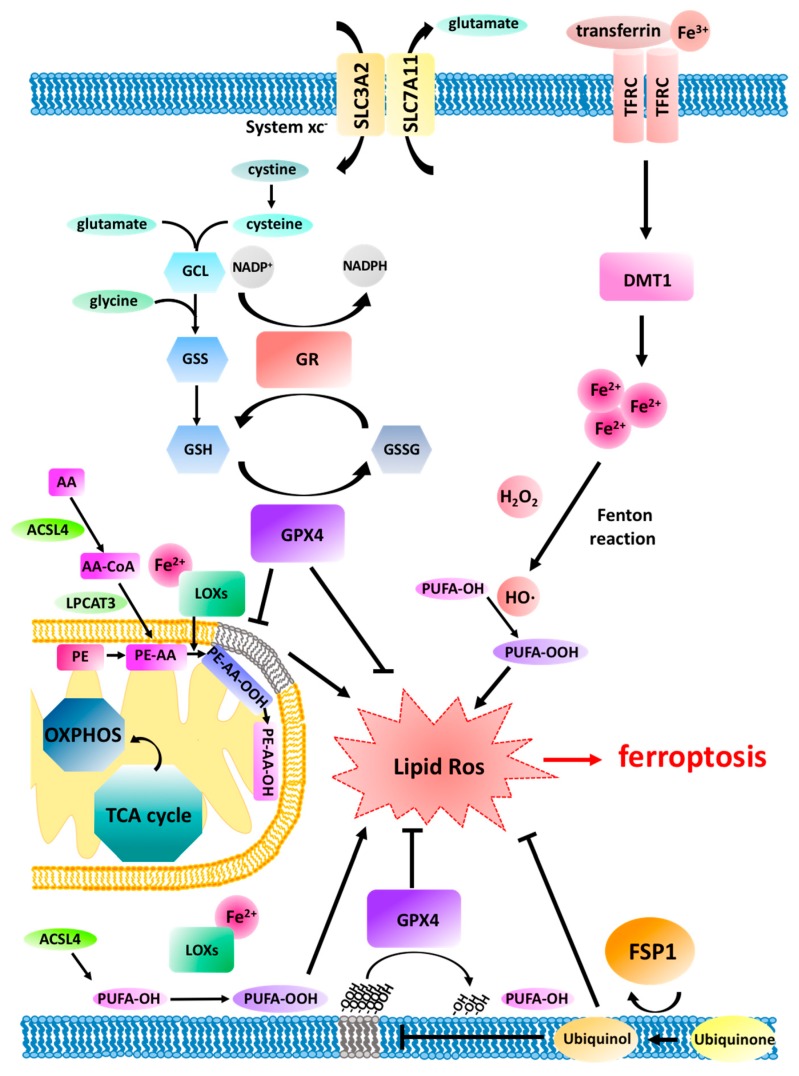Figure 1.
Schematic view of the ferroptosis pathway. Ferroptosis pursues upon aberrant build-up of lipid reactive oxygen species (ROS) leading to peroxidation (-OOH) of polyunsaturated fatty acids (PUFAs). Main peroxidation target PUFAs are arachidonic acid (AA) phosphatidylethanolamine (PE) lipid species within cellular membranes leading to membrane destabilisation and rupture. Lipid peroxidation can be triggered by cytosolic redox active iron (Fe2+) shuttled into cells bound to transferrin via transferrin receptor (TFRC) endocytosis and endosomal release mediated by divalent metal transporter 1 (DMT1). In the presence of H2O2, Fe2+ catalyses hydroxyl radical (HO∙) generation in a Fenton reaction, which sets of a radical lipid peroxidation chain reaction. Lipoxygenase (LOX) can equally catalyse lipid peroxidation using Fe2+. As a required prerequisite for ferroptosis, Acyl-CoA synthetase long-chain family member 4 (ACSL4) and lysophosphatidylcholine acyltransferase 3 (LPCAT3) generate the pool of AA-containing target lipids. Glutathione peroxidase 4 (GPX4), in turn, hydrolyses lipid peroxides converting them into their respective non-toxic lipid alcohols (-OH). GPX4 requires glutathione (GSH) as a cofactor which upon its oxidation (GSSG) by GPX4 is reduced to GSH by glutathione reductase (GR). GSH synthesis depends on glutamate cysteine ligase (GCL) and glutathione synthetase (GSS) as well as on intracellular cystine shuttled into the cell in exchange for glutamate mediated by system xc- (SLC3A2 and SCL7A11/xCT). Independently of GSH, ferroptosis suppressor protein 1 (FSP1) generates ubiquinol from ubiquinone which acts as a lipophilic radical trapping agent within membranes thereby protecting from ferroptosis. Oxidative phosphorylation (OXPHOS) and the tricarboxylic acid (TCA) cycle have both been described to be required for ferroptosis triggered by cystine-depletion or system xc- but not GPX4 inhibition.

